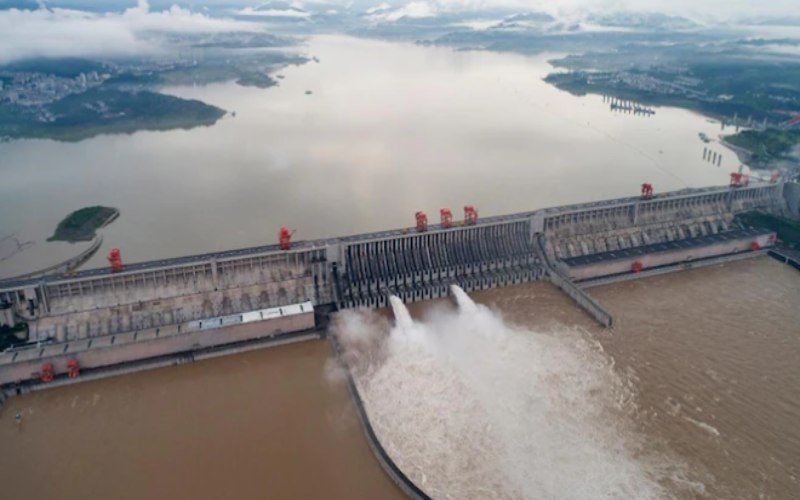- Bangladesh has formally requested technical details on China’s planned hydropower dam on the Brahmaputra.
- The Medog Hydropower Station will generate 60GW, nearly three times China’s Three Gorges Dam.
- Experts warn of significant downstream impacts on water flow and sediment distribution.
- China has assured Bangladesh that the dam will not divert water.
Bangladesh has expressed concern over China’s decision to build a massive hydropower dam on the Brahmaputra River. The government has officially requested detailed technical documents from Beijing regarding the project’s impact.
China approved the construction of the Medog Hydropower Station in December 2024. The dam, to be built in Tibet on the Yarlung Tsangpo River (which becomes the Brahmaputra in India and the Jamuna in Bangladesh), is expected to begin construction in 2029 and be completed by 2033.
Bangladesh Awaits Response from China
Officials from Bangladesh’s Ministry of Water Resources stated that a formal request was sent last month. The request seeks four crucial documents from China: an environmental impact assessment, a feasibility study, a climate impact assessment, and a disaster impact assessment.
“We have sent a letter enquiring about those issues from China. But we are yet to get any reply,” said Syeda Rizwana Hasan, an adviser to Bangladesh’s Ministry of Environment, Forest and Climate Change, and Ministry of Water Resources.
Chinese officials assured Bangladesh that the dam would function as a run-of-the-river hydropower project, meaning no water will be diverted. However, concerns remain regarding the project’s potential environmental and hydrological effects.
The Scale and Potential Impact
The Medog Hydropower Station is set to generate 60 gigawatts of electricity, making it one of the world’s largest hydropower projects. To put this in perspective, China’s Three Gorges Dam has a capacity of 22.5 GW.
The Brahmaputra River is crucial for millions of people. It flows for over 3,000 km through China, India, and Bangladesh before reaching the Bay of Bengal. Bangladesh depends on this river for over 70% of its dry season water flow, making any upstream changes critical.
Environmentalists and hydrologists have raised concerns about the long-term effects of the dam. They warn that the project could have serious consequences for the river system and the millions of people who rely on it.
“Seventy percent of the dry season flow of the Ganges-Brahmaputra-Meghna (GBM) basin that passes through Bangladesh comes via the Brahmaputra,” said Malik Fida A Khan. He is the executive director of the Centre for Environmental Geographic Information Services (CEGIS).
He also pointed out that the river carries over 50% of the sediment Bangladesh receives. This sediment is essential for land formation in the delta region. Disruption to the flow could speed up riverbank erosion and dramatically alter the region’s landscape.
Calls for Regional Cooperation
Environmentalists stress the need for a legal framework to manage shared river systems fairly. Sharif Jamil, Bangladesh country representative for Riverkeeper, emphasized the importance of collaborative water governance.
“These days, the management of common river systems prioritizes participation from all riparian states from the inception to the implementation of any infrastructure project,” he said.
Jamil also highlighted the need for Bangladesh to ratify the 1997 UN Watercourses Convention. “Bangladesh, as the lowest riparian nation, should have pursued joint legal and institutional frameworks to manage the entire GBM basin.”
For now, Bangladesh is waiting for China’s response. Experts agree that securing official documentation and transparent discussions will be crucial in understanding the dam’s full impact.
Until then, uncertainty remains about how the project will affect millions of people who depend on the Brahmaputra for their livelihoods.


